Luxembourg Philharmonic
Christian de Portzamparc was the laureate of the 1997 Philharmonie international competition. Elliptically shaped, the Philharmonie introduces a dynamic element into the triangular Place de lEurope, tracking the latters urban outlines, the concave sides stretching across two opposite angles and embracing its boundaries.
The objective of the competition was to unite three major centres of public spectacle into a single whole, a great 1500-seat philharmonic hall, a small 300-seat auditorium for chamber music, an electroacoustic chamber as well as an unroofed space with room for 120 people.
Entering the Concert Hall, through a curtain of light into the world of music and sound, is an grand sensorial experience . From the outside, the 823 slim, parallel steel columns of 17 metres alternate transparency and opacity, and compose an airy presence.
Structured across several rows in a specific pattern, bisected by a membrane of glass, the walls vibrate like a musical score that swells along the arced lines of the facade. Certain columns are weight-bearing, others support the glass and others serves to diffuse air. The Philharmonie is also a signal within the city, its light radiating outwards through the darkness like a great public lantern.
Once inside the peristyle, the mysteriously luminous favade of columns emerges, together with the folds of the central nucleus leading to the Grand Auditorium. The folds of this nucleus form the second wall, like an irregularly patterned cliff of great vertical faults that collect vertical light during the day, coloured light by night. The colour variation concept is a particular feature of the building. Christian de Portzamparc first introduced this idea in 1986, designing the acoustic niches in La Villette Auditorium, and then in 1994 for the Bandaï Tower. Walkways, bridges and staircases are wrapped around the grand auditorium, providing access to the concert hall via the ranks of loggias.
Grand Auditorium: The architect first aimed at providing the concert hall with astonishing acoustics, aesthetics and functionalities. It needed to be large, while optimising sound reflection and diffusion. The architect extended an innovation first introduced in La Villette Concert Hall: a high hall with inhabited walls. The lower part of the auditorium adopts a rectangular shoebox design, as recommended by the acoustics expert, but Christian de Portzamparc has opened it thus giving the hall greater depth in its upper part.
Above the basic sidewalls are eight towers of loggias each accommodating 28 people. The sound quality and view from these loggias is excellent, since the different levels are layered and placed at slightly different angles. The uneven geometry of the towers promotes acoustics.
Chamber Music Auditorium
The architect has designed this hall like an unfurling leaf, rising in a single motion to meet the great ellipse. Inside, the room is defined by two diffusive stretching tightly on radii thus preventing the sound from focusing. A reflector above the orchestra completes the arrangement. The audience enters the room from above and descends along the wall behind the horn of the orchestra.

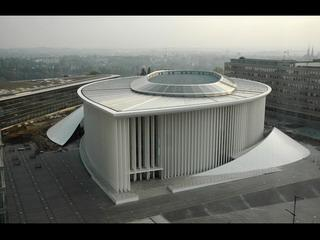
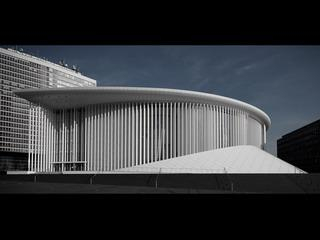
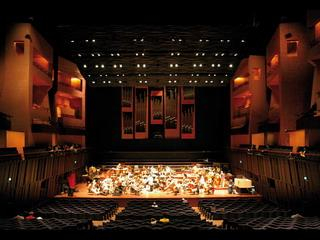
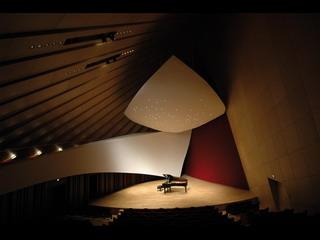
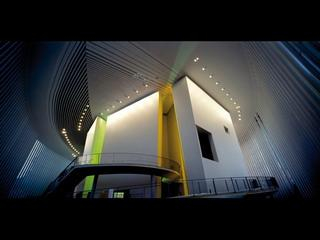
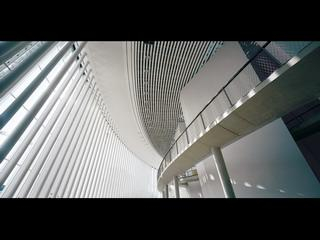
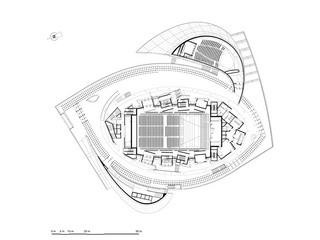
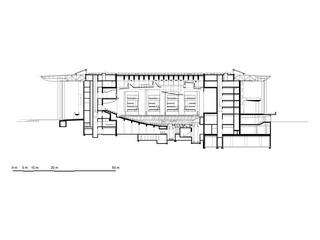
 copy.jpg)
